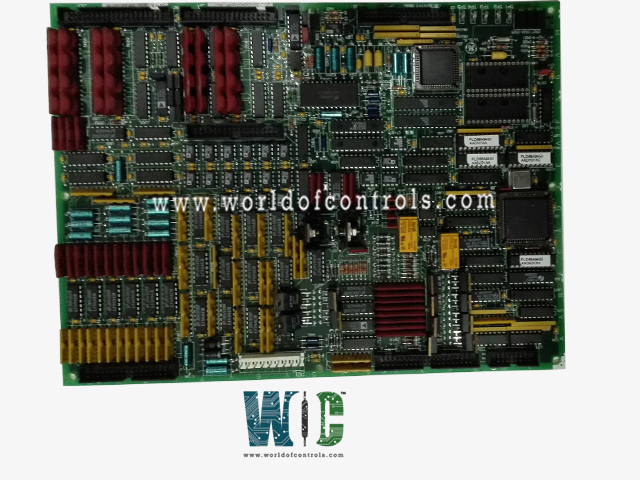
World Of Controls understands the criticality of your requirement and works towards reducing the lead time as much as possible.
DS200TCQAG1BEC - RST Analog Input/Output Board is available in stock which ships the same day.
DS200TCQAG1BEC - RST Analog Input/Output Board comes in UNUSED as well as REBUILT condition.
To avail our best deals for DS200TCQAG1BEC - RST Analog Input/Output Board, contact us and we will get back to you within 24 hours.
SPECIFICATIONS:
Part Number: DS200TCQAG1BEC
Manufacturer: General Electric
Series: Mark V LM
Number of Channels: 8
Product Type: RST Analog Input/Output Board
Input Range: ±10V
Resolution: 16-bit
Sample Rate: Up to 100 kS/s per channel
Input Impedance: >1 MΩ
Overvoltage Protection: ±35V
Power Requirements: +5 V dc, 6 A
Logic Levels: 3.3V and 5V compatible
Operating Temperature: 0°C to 70°C
Storage Temperature: -40°C to 85°C
Size: 30.48cm High x 21.33cm
Mounting: 4 mounting Holes
Repair: 3-7 Day
Availability: In Stock
Country of Origin: United States
Manual: GEH-6353B
FUNCTIONAL DESCRIPTION:
DS200TCQAG1BEC is an RST Analog Input/Output Board manufactured and designed by General Electric as part of the Mark V LM Series used in GE Linear Microprocessor Control Systems. The Analog IO Board (TCQA) processes and adjusts various analog signals from terminal boards connected to the I/O cores
TCQA CONFIGURATION:
Hardware: Jumpers J1 and J2 are utilized to select the milliamp output circuits, while J5 and J6 configure the output current range, allowing for a maximum of either 20 mA or 200 mA. Jumper J7 is designated for RS232 port testing, and J8 activates an oscillator.
Software: Configuration constants for thermocouples, pulse rates, vibrations, LVDT/LVDR positions, and 4–20 mA inputs and outputs are set using the I/O Configurator available on the operator interface, as outlined in section 5-3.3.
TCQA PULSE RATE INPUT CIRCUIT:
The TCQA board includes circuitry designed to process and adjust pulse rate inputs received from the TCQC board through the JE connector. These inputs are derived from TTL (transistor-to-transistor logic) signals and magnetic pick-up inputs routed via the QTBA and/or PTBA terminal boards. The
WOC has the largest stock of OEM replacement parts for GE Linear Microprocessor Control Systems. We can also repair your faulty boards and supply unused and rebuilt boards backed up with a warranty. Our team of experts is available round the clock to support your OEM needs. Our team of experts at WOC is happy to assist you with any of your automation requirements. For pricing and availability on parts and repairs, kindly contact our team by phone or email.
What is the function of the RST Analog Input/Output Board?
The board processes analog signals, including scaling, conditioning, and interfacing with various input and output devices such as LVDTs, thermocouples, servo valves, and 4–20 mA circuits.
Which signals are handled by the RST Analog I/O Board?
It supports signals like LVDT inputs, vibration inputs, pulse inputs, 4–20 mA inputs and outputs, relay driver outputs, voltage inputs, and generator/line signals.
How does the board interact with pulse rate inputs?
The TCQA board processes pulse rate inputs from the TCQC board through the JE connector. These inputs originate from TTL and magnetic pick-up signals via the QTBA or PTBA terminal boards.